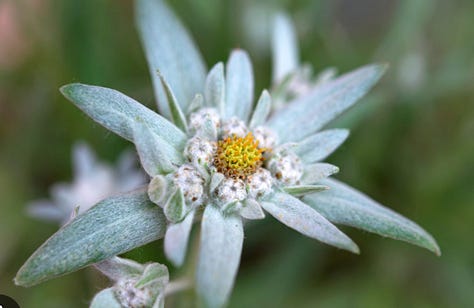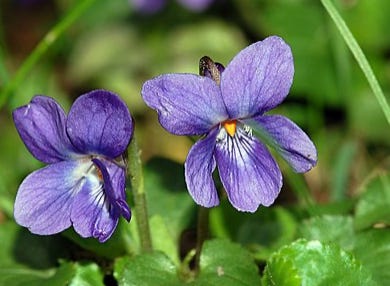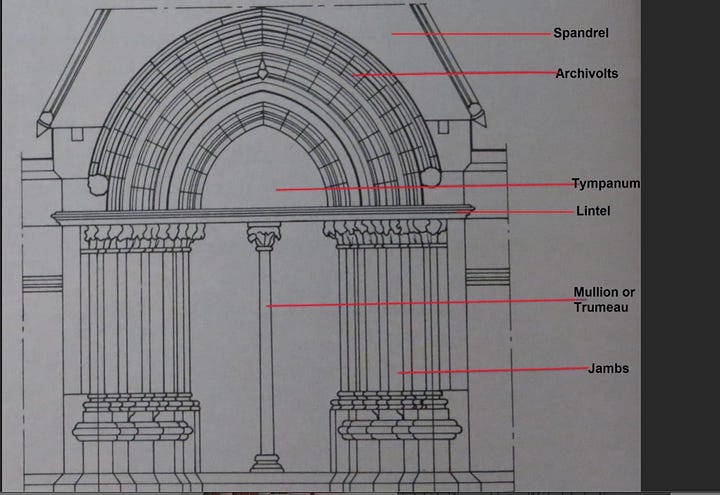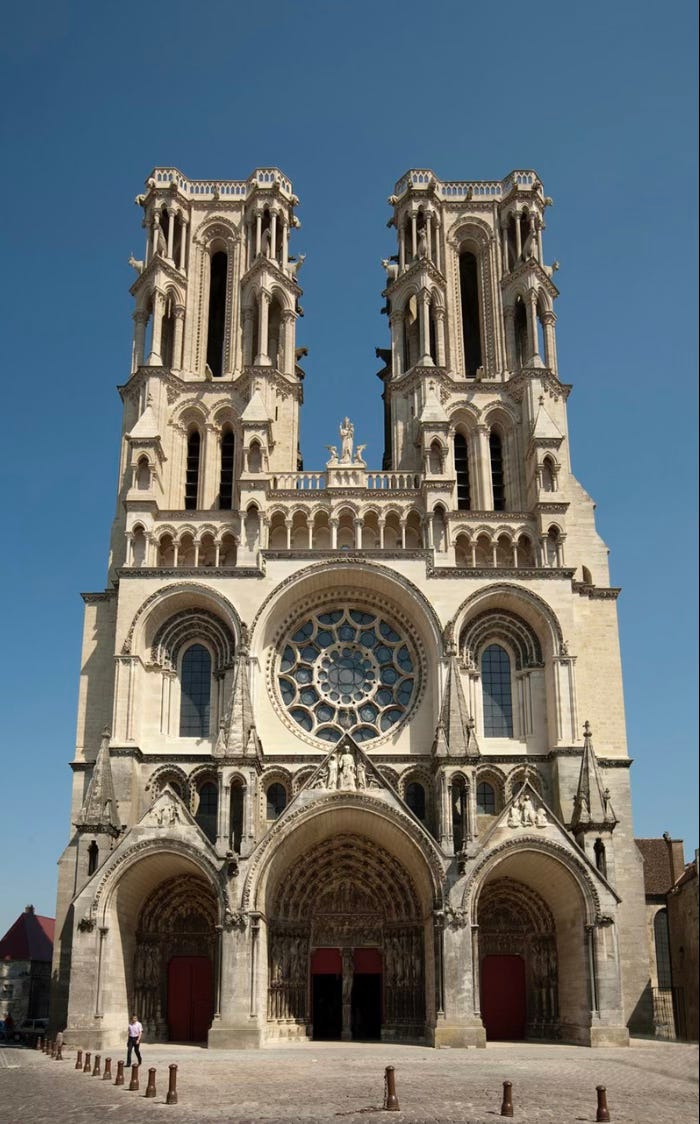The Limits of Botanical and Architectural Diagrams, or Les Arts Florissants
Neither flowers nor Gothic churches fit perfectly into general schematic drawings.



My recent posts have been somewhat long, so today’s offering is just one simple idea that helps my students remember to expect variety, not conformity, when categorizing artwork. Textbook examples are rare, yet textbook diagrams are many. You are likely familiar with botanical diagrams of flowers, labeling their individual parts: the stamen, the pistil, the petals and sepals, etc. Yet does any actual flower conform exactly to the diagram? In the examples I found, the labels are telling: “A botanically ‘perfect’ flower”—the premise being, no flower is “botanically perfect.”* Or, “If this were truly a lily, the petals and sepals would look the same (tepals). Here, different looking sepals have been added.”** These diagrams are great for a basic vocabulary of botanical parts, but not predictive of the glorious explosion of flower forms that exist in the world.






Architectural diagrams also usefully label individual parts, and it is helpful to learn that common vocabulary, of, say, Gothic Architecture, such as jamb, trumeau, triforium, and clerestory. They can be quite generalized, but often miss the overall effect of an encounter with the building, as though if you can label each part you have mastered the study of Gothic churches.


But such diagrams are not representative of the enormous variety and splendor of each different building. The Gothic style, which lasted quite a long time (beginning in the 1140s through at least 1600 in places, and beyond), went through different stages, and had widely varying local forms. You can often see these different styles emerge in the very same cathedral! This is actually completely normal for buildings that sometimes took generations to complete, or which were partially destroyed by fire and then rebuilt. Some Gothic buildings were relatively symmetrical, and others take the same vocabulary and go bananas. My examples below, analogous to the selection of flowers above, are four examples among hundreds.
Cathedral de Notre Dame de Laon, France. Towers include wonderful oxen statuary, and a medieval “diagram” of this facade survives, by Villard de Honnecourt.
Cathedral of St Stephen, Toulouse, France. What a hodgepodge!
Cathedral of St Gatian in Tours, France. I love the way the right tower is peering back at you with its own Vivid Eyes and eyebrows.
In older textbooks, I find that there wasn’t enough emphasis on that explosion of variety. I have noticed a change for the better, though, in more recent textbooks. My favorite diagrams are those that take an actual building, label those parts, and then note that other buildings will have analogous but widely differing parts.
Notre Dame de Chartres, France, picture and diagram from Stokstad and Cothren, The History of Art, Volume 1, Fourth Edition.
Bonus question: Can you imagine what it would be like if the Cathedral of Notre-Dame de Paris, after the recent fire of 2019, were partially rebuilt in contemporary architectural style? Say, by Frank Gehry, or Jeanne Gang?!? OOH. I would love to imagine her Aqua Tower style adapted into Notre Dame! Do you think that would be cool, or should it be rebuilt exactly as it looked before the fire? Tell me in the comments!
Jeanne Gang, Aqua skyscaper, detail. 2009. Chicago
(Actually, I recently read an article about how the recent renovation—almost done!—of Notre Dame de Paris brought carpenters and other artisans to revive craftsmanship that has been in use since the Medieval period, and that is so amazing, too: “The Miraculous Resurrection of Notre Dame” by Joshua Hammer and Patrick Zachmann, GQ, September 17, 2024.)
* https://growitbuildit.com/botany-guide/floral-structures/








This is an eloquent capturing of the inadequacy of analytical schema when it comes to actual experience. It makes me think of so many pieces of music in which the composer or analysts who wrote about them devised quite rigorous academic ways of articulating how the music was structured. But analysis can only go so far. In nature, the actual flower doesn’t measure up to the model; and in art, the model does not quite measure up to the experience.